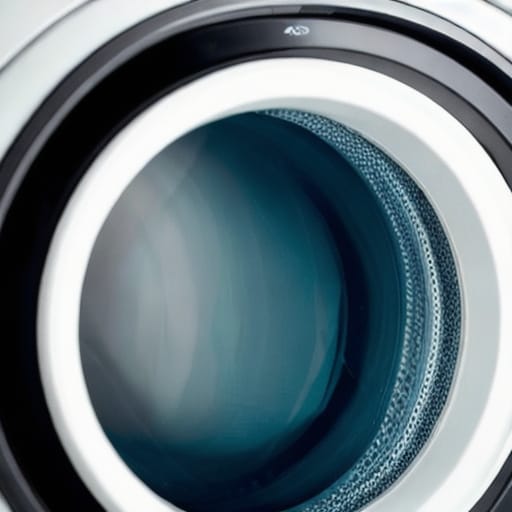Curling up under a warm, fluffy down comforter on a cold winter night – could there be anything cozier? Down duvets make for the ultimate in snuggly bedding, but only if properly cared for. As an investment bedding piece, understanding good down duvet care and machine washing best practices helps extend its lifespan.
This beginner’s guide has everything you need to know about keeping your down comforter clean, fluffy and functioning beautifully year after year. We’ll discuss:
- Types of down duvets and alternative bedding
- Reading care labels
- Washing frequency guidance
- Step-by-step machine washing instructions
- Proper drying guidelines
- Alternative cleaning approaches
- Maintenance tips and troubleshooting
- Professional cleaning advice
- Long-term care and sustainability
Arm yourself with down comforter washing wisdom so you can rest easy knowing your duvet is in good hands – yours!
Down vs. Down Alternative Duvets
Before diving into cleaning, let’s quickly define what makes a true down duvet:
Down Duvets
- Filled with a natural material – goose or duck down from waterfowl
- Clustered pieces of lightweight, fluffy down feathers
- Superior insulation properties trap body heat
- Very breathable and moisture-wicking
- Long-lasting with proper care
- Usually a major investment starting
Down Alternative Duvets
- Synthetic polyester fill to mimic properties of down
- Hypoallergenic for those allergic to natural down
- Affordable, starting ~$50+
- Less insulation value and durability than natural down
- Microfibers can clump and cause heat retention over time
- Generally machine washable
While down alternative bedding serves a purpose for allergy-sensitive consumers, most duvet enthusiasts agree: natural down offers unmatched levels of comfort, fluffiness, longevity and performance as an insulation layer.
But it must be properly cared for…which is why understanding machine washing best practices is key!
To Wash…Or Not to Wash? Reading That Care Tag
Your down comforter’s care tag should always be your first point of reference when it comes to cleaning. While most high-quality down duvets today are machine washable, guidelines can vary.
Here’s what to look for on that tag:
Machine wash – Follow provided instructions (more details later)
Dry clean only – Take to a professional cleaner 1-2 times per year
Spot clean only – Use a specialized down cleaner for stains
In general, here are some washing frequency guidelines to follow:
| Item | Wash Every |
|---|---|
| Everyday use | 6 months |
| Infrequent use | Once a year |
| Hot sleepers | 3-4 months (sweat and body oils) |
| Kids’ bedding | 1-2 months (food, spills, etc.) |
| White duvet covers | 1 month (soiling visibility) |
Remember: You don’t need to wash the whole comforter when just the duvet cover is dirty! Schedule full comforter washes strategically.
Now let’s get down and dirty with…drumroll…washing a down comforter at home!
DIY Down Comforter Washing
Washer settings, detergents, pre-treatments – throwing your precious down duvet into the wash can feel scary! We’ve broken the process down into simple, fail-safe steps:
1. Check For Damage
Examine your comforter inside and out for any rips, holes or frays that could worsen in the wash. FIX THESE FIRST by sewing tightly closed, applying fixative patches, etc. This protects down leakage and clumping.
2. Pretreat Stains + Soiled Areas
Tackle stains BEFORE washing to avoid setting them permanently. Apply a prewash spray or diluted mixture of:
- Warm water
- Mild detergent
- White vinegar or hydrogen peroxide
Let sit 5-10 minutes before washing. Bleach is too harsh for down material.
3. Select Delicate Cycle + Cool Water
Set machine to a GENTLE, DELICATE cycle since agitation can damage down feathers. Be sure to choose:
- Cool water to preserve down clusters
- Extra rinse option to remove detergent residue
- Low spin for less stress on material
[Example photo of washer settings]
4. Use Proper Detergent
Protect your investment with the right products specially formulated for washing DOWN:
| Type | Benefits | Brand Examples |
|---|---|---|
| Woolite Down & Feather Wash | Ultra-delicate cleansers lift soil + oil <br> Rinses residue-free | Woolite Down & Feather Wash |
| The Laundress Down & Feather Wash | Gently loosens, removes buildup <br> Leaves baffles intact | The Laundress NYC |
| Nathan Sports Wash | For activewear down; antimicrobial <br> Halogen-free formula | Nathan Sport Wash Down Cleaner |
Using regular laundry detergent can leave behind suds and waxy residue. Mild liquid formulas made for down dissolve solids without harsh chemicals that degrade delicate fabric.
5. Air Dry Thoroughly
Move your comforter straight from washer to dryer on LOW HEAT to re-fluff down and evaporate residual moisture.
Remove promptly before overdrying then finish air drying completely. This preserves maximum loft and fluffiness since heat weakens down clusters.

Restoring Down’s Fluffy Glory
Beyond basic washing, there may be times your down comforter needs some extra fluffing power after use and storage. Try these troubleshooting tips:
| Issue | Solution |
|---|---|
| Losing loft, flat spots | Throw in dryer on air fluff cycle with tennis balls |
| Clumping | Break up gently by hand THEN dry to re-loft |
| Musty smell | Sprinkle with baking soda, gently shake in, air dry |
| Soiled spots, stains | Spot clean by dabbing area with down cleaner |
Once or twice a year, have your comforter professionally laundered to restore maximum coziness and performance.
Down Alternatives: To Wash or Not to Wash?
For down alternative comforters, check care tags as your first step. Nearly all down alternative bedding is machine wash friendly since the synthetic fill stands up well to agitation.
However, washing too frequently can degrade durable water resistant (DWR) chemical coatings faster over time. For typical use, only launder 1-2 times per year. Exceptions are when soiled by spills, stains etc.
Use the same best practices outlined for down comforters when machine washing down alternative versions:
- Cool, delicate cycle
- Mild detergent
- Low heat drying
Bonus Tip: Add two clean tennis balls to the dryer to help redistribute fill and prevent clumping!
Extend Your Duvet’s Lifespan
You invested good money in your cozy down comforter. Follow these tips to enjoy it for years of blissful sleep:
Use a Duvet Cover
A duvet cover protects your comforter from body oils and spills. Wash cover frequently instead of the whole duvet.
Allow Air Circulation
Let your comforter breathe in storage to prevent moisture, mold, and clumping issues.
Dry Clean Annually
Even when machine washing, have professionally cleaned once a year for deeper revitalization.
With proper care and maintenance, a quality down comforter can last over 10 years!
When to Consider Replacement
No matter how careful we are, all down duvets have a functional lifespan. Shop for a replacement every 8-12 years, or when you notice:
- Significant filling loss, flat spots
- Baffle walls or stitching failing
- Lint balls or clumping increasing
- Musty smell persisting after washing
Dispose of old down bedding responsibly or donate useable items.
Be An Eco-Friendly Duvet Owner
Caring for our down-filled friends can have environmental impacts too. Adopt these sustainable practices for relatively low effort:
- Wash in cool water to save energy
- Line dry when possible to avoid dryer use
- Use non-toxic, biodegradable detergents
- Recycle packaging from any new comforter
- Donate usable bedding to local charities
- Consider ethically sourced down from trustworthy vendors
Vote with your dollar and elevate the entire down goods industry through conscientious consumerism. The planet and innocent feathered creatures will thank you!

Let Your Duvet Delight
Maintaining your down comforter might feel intimidating as a beginner, but you now have all the tools needed to wash with confidence and keep your bedding revitalized for years.
Implement regular cleaning schedules for protective layers and full comforters alike. Address issues promptly to avoid costly repairs or replacements. Consider professional services annually for optimal results.
Most importantly, enjoy those blissful nights of serene, comfortable sleep under freshly laundered down! You and your duvet both deserve it.
Frequently Asked Questions
What is the best way to clean a down comforter at home?
The best way to clean a down comforter at home is to use a front-loading washing machine on a gentle or delicate cycle in cool water. Use a mild detergent specially formulated for washing down, like Woolite Down & Feather Wash. Then dry thoroughly on low heat and finish air drying.
How often should you wash a down comforter?
Only wash down comforters 2-3 times per year, or when noticeably soiled. Washing too frequently can damage the down and reduce insulation. Instead, use a removable down comforter cover and wash that monthly.
Why does my down comforter become flat after washing?
Improper machine drying can cause down comforters to lose their fluff and become flat. Always dry on low heat, adding tennis balls to fluff periodically. Remove before completely dried then air dry fully before using or storing.
What is the best way to dry a down comforter after washing?
The best drying method is to machine dry on low heat only until partially dry, then finish air drying completely – draped over a clothes rack or banister. Avoid over-drying as high heat can damage down clusters.
How can you fix clumps in a down comforter?
To fix clumping in down bedding, first gently break up clusters by hand. Add 2-3 clean tennis balls to the dryer and re-dry on air fluff cycle to redistribute down filling evenly. Repeat air drying cycles as needed.
How do you get odors out of a down comforter?
Remove musty odors from down comforters by sprinkling baking soda lightly between layers, gently shaking to distribute. Allow to sit for several hours before machine washing. Check that odor has fully dissipated after drying.
When should you replace an old down comforter?
Plan to replace a down comforter every 8-12 years. Signs it’s time for replacement include excessive flat spots, leakage around baffle walls, increased clumping and scent that persists after washing. Shop early for the new comforter to get the most use from the old one before disposal.



